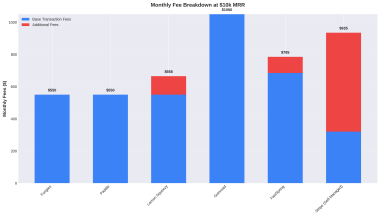The gaming industry has witnessed exponential growth in recent years, becoming one of the most lucrative sectors in the entertainment market. With constantly advancing technology and an ever-expanding player base, the industry continues to evolve at a rapid pace. This article explores the latest statistics and trends in the gaming market, highlighting the projected revenue growth, key game titles that have shaped the industry in the past five years, and the role of web shops in distributing in-game purchases for mobile games.
I. Current State of the Gaming Market:
According to industry projections, the total revenue in the Games market is expected to reach an impressive US$225.30 billion in 2022. This remarkable figure showcases the significant economic impact of the gaming industry. Furthermore, a Compound Annual Growth Rate (CAGR) of 8.35% is anticipated from 2022 to 2027, resulting in a projected market volume of US$352.10 billion by 2027. These statistics highlight the industry’s potential for continued expansion and its ability to attract a wider audience.
A. Revenue Breakdown in the Gaming Market:
- In-App Purchase (IAP) Revenue: In 2022, the projected revenue from in-app purchases is set to reach US$145.30 billion. This revenue stream has become increasingly popular, allowing players to enhance their gaming experience through additional content or virtual goods.
- Paid App Revenue: The projected revenue from paid app downloads in the Games market is estimated to be US$1.25 billion in 2022. Although in-app purchases dominate the revenue stream, paid app downloads remain a notable segment.
- Advertising Revenue: Advertising revenue in the Games market is expected to reach US$78.84 billion in 2022. As games become more immersive and widespread, advertisers recognize the potential to engage with a vast audience through in-game advertisements.
B. Global Revenue Distribution:
China emerges as the leading revenue generator in the gaming industry, with an estimated revenue of US$71.30 billion in 2022. The Chinese gaming market’s size, driven by a large population and a passion for gaming, solidifies its dominance on the global stage. Other regions, such as North America, Europe, and Asia-Pacific, also contribute significantly to the overall revenue of the gaming market.
II. Gaming Trends: Shaping the Industry in the Last Five Years:
The past five years have witnessed the rise of several game titles that have revolutionized the industry and captivated players worldwide. These games have pushed the boundaries of technology, storytelling, and player engagement, transforming the gaming landscape. Here are some of the most influential titles:
A. “Fortnite” (Epic Games, 2017): “Fortnite” took the gaming world by storm with its free-to-play battle royale mode, attracting millions of players across various platforms. Its combination of competitive gameplay, frequent content updates, and social interactions within the game made it a cultural phenomenon, transcending the gaming sphere.
B. “PlayerUnknown’s Battlegrounds” (PUBG) (PUBG Corporation, 2017): PUBG popularized the battle royale genre and laid the foundation for the success of subsequent titles. It introduced the concept of 100 players battling on an ever-shrinking map, creating intense and adrenaline-fueled gameplay experiences.
C. “Among Us” (InnerSloth, 2018): Originally released in 2018, “Among Us” gained immense popularity in 2020, becoming a global sensation. The game’s simple yet addictive premise of uncovering impostors in a group of players sparked a surge in social deduction gaming, leading to a new wave of similar titles.
D. “The Legend of Zelda: Breath of the Wild” (Nintendo, 2017): As a launch title for the Nintendo Switch console, “Breath of the Wild” redefined open-world exploration and set a new standard for the beloved “Legend of Zelda” franchise. Its immersive world, dynamic gameplay mechanics, and captivating storyline earned critical acclaim and player adoration.
E. “Pokémon Go” (Niantic, 2016): “Pokémon Go” introduced augmented reality (AR) gaming to the masses, blending the virtual and real world as players explored their surroundings to capture Pokémon. It became a cultural phenomenon, attracting a diverse audience and generating millions in revenue through in-app purchases.
III. Web Shops and In-Game Purchases for Mobile Games:
Web shops have played a crucial role in the distribution of in-game purchases for mobile games, providing convenience and accessibility to players. With the rise of smartphones, mobile gaming has become increasingly popular, and developers have capitalized on this trend by integrating in-app purchase systems.
Web shops serve as digital marketplaces where players can browse and purchase in-game items, virtual currency, or premium content directly from their devices. These platforms enable developers to monetize their games and offer players a seamless way to enhance their gaming experience. Furthermore, web shops often provide a secure payment gateway, ensuring user privacy and transaction security.
In addition to facilitating in-game purchases, web shops also allow developers to release updates, patches, and expansions directly to players, minimizing the need for physical distribution and maximizing reach. This streamlined approach has revolutionized the gaming industry, enabling developers to connect with their audience more efficiently and maintain an ongoing relationship through regular content updates.
Conclusion:
The gaming industry continues to thrive, propelled by impressive revenue growth projections and a constant stream of innovative titles. As the market expands, developers are embracing new revenue models such as in-app purchases and advertising, allowing them to create engaging experiences while maintaining profitability. Key game titles in the last five years have redefined genres, introduced groundbreaking gameplay mechanics, and captured the imaginations of millions of players worldwide. Additionally, web shops have played a vital role in the distribution of in-game purchases, providing a convenient platform for players to enhance their gaming experience.
As technology advances and gaming becomes more accessible, the future of the industry appears bright. The ever-evolving landscape presents endless possibilities for developers, players, and stakeholders, making the gaming industry one of the most exciting and dynamic sectors in the global entertainment market.






